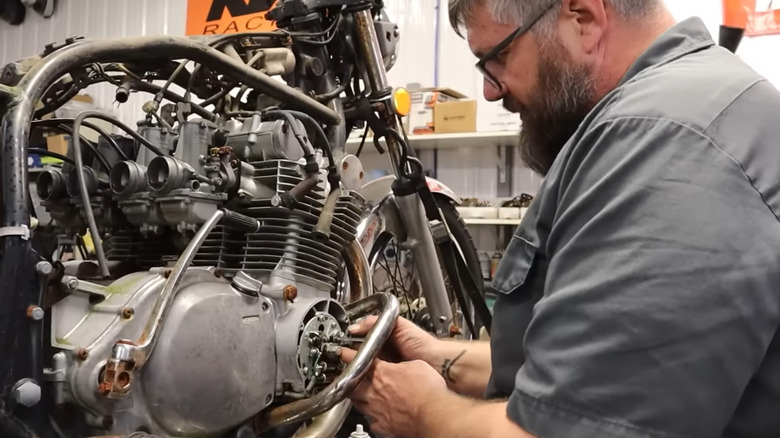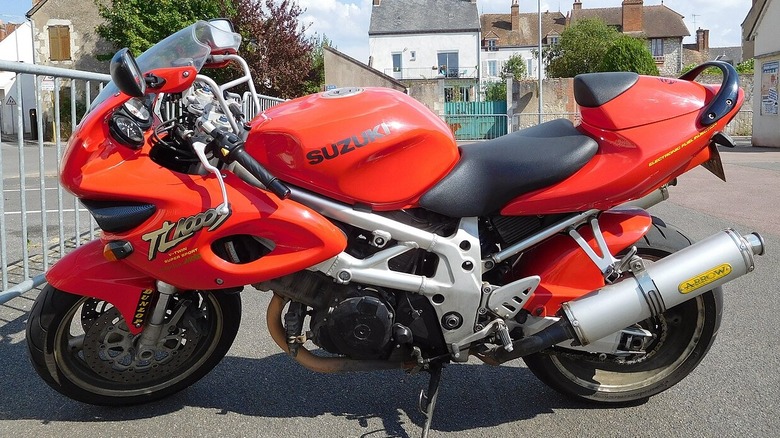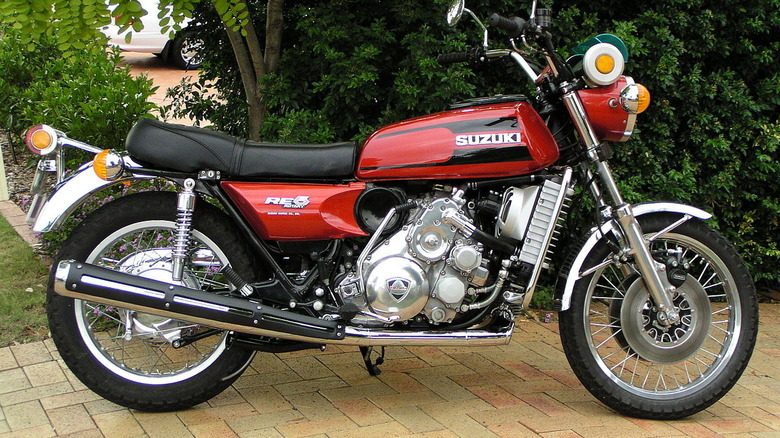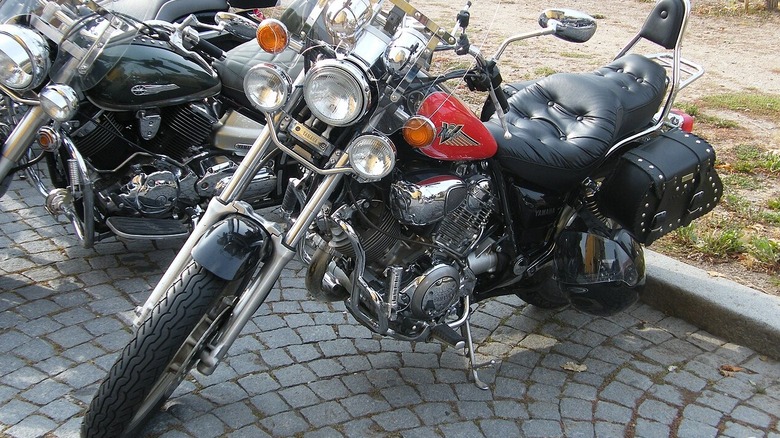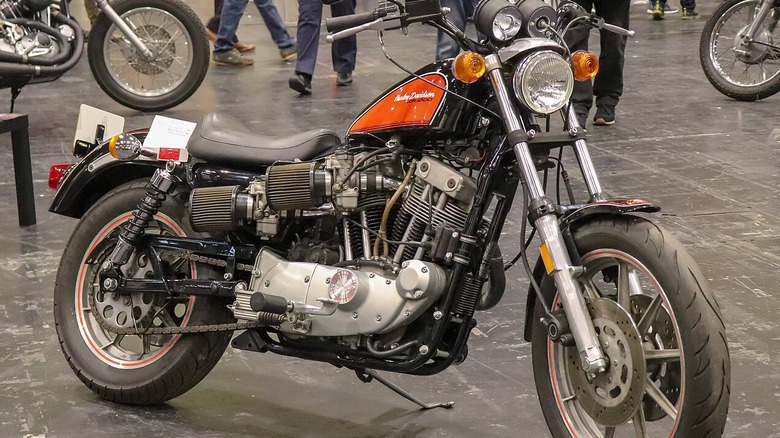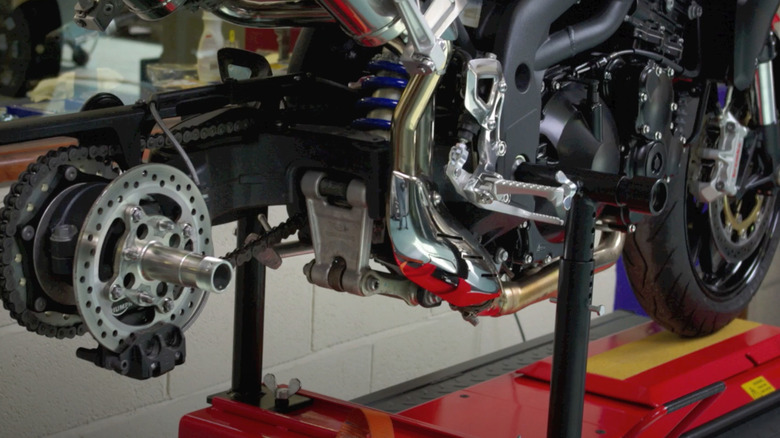5 Of The Least Reliable Motorcycles Ever Made (By Recalls, Reviews & Redesigns)
There's no definite way to determine how reliable or unreliable a motorcycle will be the moment it rolls off the production line. Unfortunately, the first owners often become the real-world test subjects, and their experiences quickly reveal whether a bike will earn a reputation for dependability or be labelled a lemon. There isn't a single manufacturer who goes into production hoping to produce a lemon. If anything, most unreliable vehicles on the market right now are often a result of a manufacturer experimenting with an overly ambitious technology that wasn't ready for the road. And as such, even the most reputable brands, including Honda, Yamaha, and Harley-Davidson, have had their own share of unreliable models.
Still, when it comes to history, there are winners and losers. Unfortunately, the models on this list earned a spot as the industry's least reliable motorcycles ever made. It's still unclear how they passed through quality control and ended up on riders' driveways. To identify these problematic models, we dug through manufacturer bulletins, recall databases, and popular motorcycle forums, comparing common issues, recurring faults, and testimonials from previous owners. As such, if you are in the market for a problem-free classic motorcycle, it would be advisable to steer clear of these motorcycles.
Suzuki TL1000S (1997-2001)
Other than its rough past, the Suzuki TL1000S is quite the looker and a rare gem in the world of motorcycles. Developed to homologate for the World Superbike Championship, the TL1000S only participated for one season in 1998, failing to achieve expected success, which speaks volumes about its reliability.
This superbike was packed with an impressive 995cc V-twin engine that was capable of making 125 hp and 73 lb-ft of torque. Still, it had issues with the rear suspension, frame, and areas around the shock mounting point. The Suzuki TL1000S's F1-derived rotary dumper also had a tendency to overheat, and as a result, provided inadequate damping that led to a tank slapper effect. The bike also had issues with its fuel delivery system, where the gasket between the fuel pump and tank was unable to provide a tight seal, leading to fuel leaks.
Recalls were issued due to the tendency of the bike's front end to become unstable (rapid side-to-side handlebar movement) when loaded or going over a bump. Suzuki's remedy to the malfunction was installing a steering damper to ease handlebar movement and front wheel oscillation. Unfortunately, this was a design flaw that made it unstable at high speeds and ultimately mechanically unsafe.
Suzuki RE5
The Suzuki RE5 is a prime example of motorcycle innovations that did not turn out as expected. Despite featuring an innovative rotary engine, the RE5 had several issues that led to its limited production run between 1974 and 1976. According to Suzuki, this special bike was supposed to set new standards in motorcycle touring. This bike was powered by a single rotor 497cc engine that was capable of making 62 horsepower at 6,500 rpm, and 59.4 lb-ft of torque at 3,500 rpm. For a relatively heavy bike, it made meager output figures, was a fuel hog, and, as a result, did not appeal to riders.
As expected of rotary engines, the Suzuki RE5 engine ran hot even though it featured a complex cooling system (water and oil cooling). This bike's engine, like most rotary powerplants, experienced rotor wear at the tip and housing surfaces that required specialized surface treatments to solve the problem. Additionally, since its rotary engine was unique, it had limited dealer knowledge at the time, which further worsened its reliability issues, making repairs impractical and expensive. Still, despite its reliability issues, the Suzuki RE5 will go down in history as a bold attempt by the Japanese bike manufacturer to introduce rotary engines to motorcycles.
Yamaha Virago XV535
The Yamaha Virago XV535 was introduced in the early '80s as an entry-level motorcycle. This iconic classic bike earned a reputation among riders of that era for having multiple issues, from starter clutch failures, where the clutch doesn't engage properly with the engine failing to start, to producing a grinding noise during startup. This bike also had carburetor issues that were related to fuel delivery and air-fuel mixture. As a result, it suffered from fuel leaks, clogging, and improper float levels, and in some instances, the bike stalled when the throttle was open.
It was also marred with electrical problems, forcing many owners into repeated workshop visits. On Bike Chat Forums, a disgruntled owner shared how their bike constantly had recurring electrical issues despite repairs. The Yamaha Virago XV535 issues were not one-offs; they were widespread across early units, and fixes often failed to last. Another rider on a popular motorcycle forum was quick to point out that the Virago had bad reliability, was slow, and that the Magna was a better choice for a '80s bike. Still, Yamaha was able to deal with all the issues the XV535 had until the V-Star replaced it in 1997.
2011 BMW S 1000 RR
The BMW S 1000 RR debuted in 2009 as the German manufacturer's first four-cylinder superbike, featuring a powerful 999cc engine capable of producing 193 hp at 13,000 rpm (the current model produces 205 hp). It is by no means a beginner's bike and was designed for the Superbike World Championship (WSBK). As you'd expect, the S 1000 RR introduced some industry-leading technology, such as Dynamic Traction Control and Race ABS. This bike has undergone several major updates and redesigns, notably in 2012, 2015, and most significantly in the 2019 model year.
Unfortunately, early production models of the BMW S 1000 RR, specifically those developed in late 2011, had reliability concerns that even prompted a safety recall (loose connecting rods that potentially caused engine failure). BMW received at least 33 warranty claims globally (one in the U.S.) related to this recall. The 2011 S 1000 RR also had other NHTSA-recorded recalls due to fuel system and lighting issues, pointing towards early production teething issues.
There are several complaints about the 2011 BMW S 1000 RR on popular motorcycle forums from riders. On Reddit, one rider confessed that the 2010 and 2011 models had engine issues, but these were solved under the recall. The rider added that the 2013 models were a better pick. "8,000 miles. False neutrals with the quick shifter, excessive engine hesitation with the quick shifter, and difficult to change gear manually," another rider responded to a post about the 2011 BMW S 1000 RR's reliability on the S 1000 RR forum.
Harley-Davidson Sportster 1000
The Harley-Davidson Sportster 1000 was one of the models developed during HD's AMF era and was known for having engine and electrical issues, particularly on the "ironhead" models. These bikes were heavy and underpowered, featuring a 998cc air-cooled 45-degree V-twin engine capable of 61 horsepower at 6,200 rpm. The Sportster had a good 53-year run. However, units developed in the mid-1980s were notorious for vibration, electrical issues (1980 and 1981), and oil leaks (1979) that were considered a regular part of ownership.
On the ironhead models, the solid-mounted engine design caused excessive vibration, which sometimes led to parts loosening and falling. "First thing right off the bat, make sure the bolts are lock tight on the threads since my bike parts would come loose very easily from extreme vibration," an owner responded to a post on Harley-Davidson Forums inquiring about owning a Sportster 1000. Still, some Sportsters (Evo Sportster) are known to be reliable with proper maintenance.
The Harley-Davidson Sportster 1000 also experienced quality control issues (especially during the AMF era) that forced owners to start rebuilding major components within a few years. Owners who had ignition issues started retrofitting their bikes with revised parts from later years. Still, the Sportster 1000, and specifically the ironhead models, can be quite fun and engaging, especially for experienced riders who enjoy working on their bikes.
How we identified the least reliable motorycles
Sometimes, cars and bike models get a bad rep for being unpopular, which is quite different from being unreliable. Here's the truth: there's more to identifying an unreliable motorcycle than a few disgruntled owners. As such, we reviewed data and opinions from multiple trusted sources, including recall databases, consumer protection agencies, manufacturer service bulletins, and popular forums frequented by bike owners, like Reddit. The motorcycles that were flagged showed a pattern of widespread, recurring issues rather than isolated defects.
Some of the factors we considered included motorcycles models that had multiple recalls in a short production run, and engines and designs that were short-lived and heavily revised after a single model year. Also, critical mechanical or electrical issues that lead to complete breakdowns or dangerous riding conditions. However, perhaps the most important factor, were reports of the same failures across different platforms by owners. To get a clear picture, we identified motorcycles whose reliability and reputation are undeservedly infamous among rider circles. These models didn't just feature quirks, they had issues in design, execution, or worse, both.
